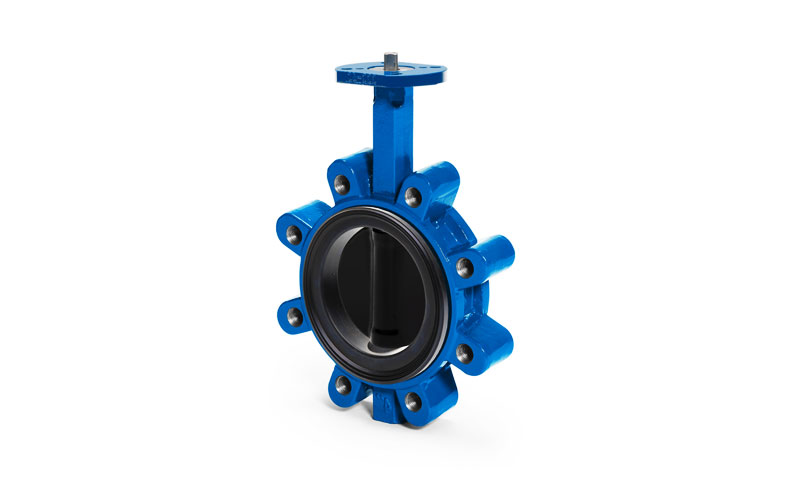1. Ներածություն
Custom Butterfly valves are essential components in modern fluid control systems, known for their compact design, fast operation, եւ բազմակողմանիություն.
Originally conceptualized in the early 20th century, these փականներ have evolved significantly to meet the growing demands of industries requiring efficient and cost-effective flow control solutions.
Այսօր, butterfly valves are widely used in diverse sectors such as Treatment րի մաքրում, Նավթ եւ գազ, Hvac, Քիմիական մշակում, ծովային, մի քանազոր սնունդ և խմիչք industries.
Their popularity stems from their ability to handle a broad range of fluids—including gases, հեղուկներ, and slurries—with minimal pressure drop and rapid shutoff capabilities.
2. What Is a Butterfly Valve?
Էունք butterfly valve is a type of quarter-turn rotary valve used to regulate, isolate, or control the flow of fluids, gases, or slurries in piping systems.
Its name is derived from the disc’s operation, which resembles a butterfly’s wings as it rotates within the valve body.
Butterfly valves are widely recognized for their compact design, quick actuation, low cost, մի քանազոր broad size range, making them suitable for both low- and high-pressure applications across a variety of industries.
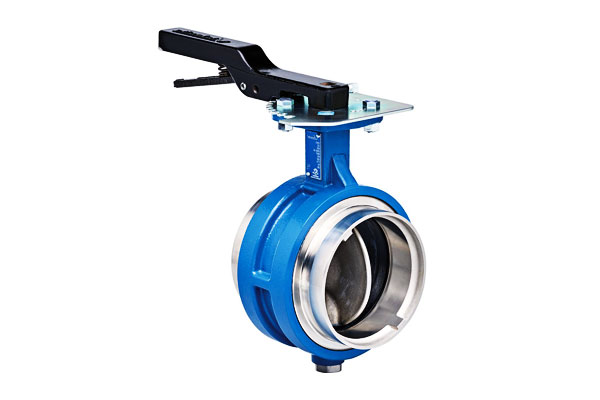
Core Components and Their Functions
Փականի մարմին
The valve body is the outer casing that houses all internal components and interfaces with the pipeline through wafer, քոթակել, ֆլանգավորված, or butt-welded ends.
Valve sizes typically range from DN50 (2 դյույմ) to over DN3000 (120 դյույմ) for large-scale industrial applications.
Butterfly Disc
The disc is the rotating element that regulates flow. Shaped like a circular or elliptical plate, it is mounted either centrally or slightly offset on the shaft.
When rotated 0° (parallel to the flow), the disc allows full flow through the valve. When turned 90° (perpendicular), it fully blocks the flow, achieving shutoff.
Valve Stem (Shaft)
The stem connects the actuator to the disc, transmitting the torque necessary for rotation.
In large or high-pressure valves, the stem may include upper and lower bearings or bushings to reduce operating torque and extend service life.
Նստվածք (Կնիք)
The seat is a ring-shaped sealing surface located inside the valve body. It interacts with the disc edge to provide a tight seal when closed. The seat plays a critical role in leak-tightness and longevity.
Actuator
A mechanism (ձեռնարկ, օդադող, էլեկտրական, or hydraulic) that drives the disc’s rotation. Manual actuators use handwheels or levers; automated versions integrate with control systems for remote operation.
3. Working Principle of Butterfly Valves
Butterfly valves function based on a quarter-turn rotational motion that controls the position of a disc relative to the flow path.
The simplicity of this design allows for quick operation, Հուսալի անջատում, and efficient flow modulation, making them widely used in both on-off and throttling applications.
Basic Operating Principle
At the heart of a butterfly valve’s operation is the disc, which rotates around a central or offset shaft:
- Open Position (0°): When the disc is aligned parallel to the flow direction, the valve offers minimal flow resistance.
This allows the medium to pass through almost unimpeded, resulting in a low-pressure drop across the valve. - Փակ դիրք (90°): When the disc is rotated perpendicular to the flow, it presses tightly against the seat, forming a seal that stops the flow.
Depending on the valve type (resilient, high-performance, or triple offset), this seal may be either soft or metal-to-metal. - Շռայլ (10°–80°): Intermediate positions allow partial opening of the valve, where the disc restricts the flow similar to an orifice plate.
The valve can be used to control flow rate, although accuracy varies based on disc design and valve type.
Flow Modulation Characteristics
The relationship between disc angle and flow rate is non-linear, particularly for standard resilient-seated butterfly valves.
At lower disc angles, small movements cause significant changes in flow, which can make precise modulation challenging.
Սակայն, high-performance and triple offset butterfly valves offer improved control characteristics and are better suited for regulated flow applications.
Sealing Mechanisms
Butterfly valves achieve shutoff through direct contact between the disc edge and the valve seat. Է type of seal determines both the performance and application suitability:
- Resilient-Seated: Utilizes a soft elastomeric seat (Է.Գ., Eddm, NBR) for bubble-tight sealing.
Ideal for low- to medium-pressure systems but may degrade in corrosive or high-temperature environments. - High-Performance (Double Offset): The disc is offset from the seat centerline, reducing friction during operation and improving sealing under pressure. Suitable for moderate pressure and temperature applications.
- Triple Offset: Adds a third geometric offset to eliminate friction entirely during operation, թույլ տալով metal-to-metal sealing suitable for high-pressure, high-temperature, and critical service conditions.
Speed of Operation
Thanks to the 90° rotational motion, butterfly valves can be operated rapidly:
- Manual valves typically require one quick turn of the lever or several turns of a gearbox.
- Automated valves (էլեկտրական, օդադող, կամ հիդրավլիկ ակտիվացուցիչներ) can open or close in 1 դեպի 5 վայրկյան, depending on valve size and actuator type.
This speed makes butterfly valves ideal for emergency shutdown systems (ESD), frequent cycling operations, or processes requiring rapid flow isolation.
4. Թիթեռի փականների տեսակները
Butterfly valves come in a wide variety of configurations tailored to specific installation requirements, performance criteria, and actuation preferences.
They are commonly classified based on body design, կնքման կատարումը, մի քանազոր actuation method.
Based on Body Design
This classification refers to how the valve connects to the piping system and how it is supported structurally.
Wafer Type Butterfly Valve
Է wafer-style butterfly valve is the most common and cost-effective design.
It is designed to be sandwiched between two pipeline flanges using long bolts that pass through the valve body and both flanges.
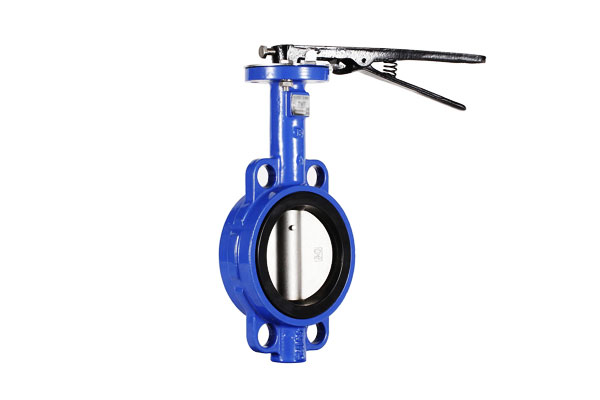
The wafer valve provides a tight seal against bi-directional pressure, preventing backflow.
Սակայն, it does not support downstream piping, so it is not suitable for applications requiring dead-end service.
Lug Type Butterfly Valve
The lug design features protruding lugs with threaded inserts around the valve body, allowing the valve to be bolted to each flange separately.

This configuration enables one side of the piping system to be disconnected without affecting the other, making it useful for systems that require periodic maintenance or isolation of a single side.
Lug-type valves are suitable for dead-end service when installed with the appropriate pressure rating.
Double Flanged Butterfly Valve
The double-flanged design includes flanges on both ends of the valve body, which are bolted directly to the pipeline flanges.
This construction provides enhanced mechanical strength and support for heavy piping systems.
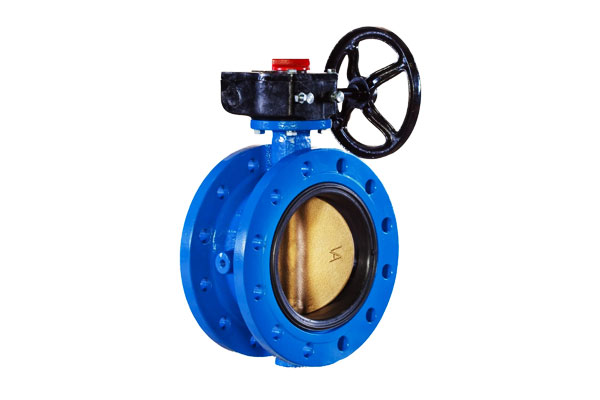
It is particularly suited to large-diameter pipelines, buried installations, and applications involving frequent opening and closing.
Butt-Welded End Butterfly Valve
In this type, the valve is permanently welded to the pipeline, eliminating flanged joints and reducing potential leak points.

This design is ideal for high-pressure, high-temperature, or hazardous environments where joint integrity and long-term sealing are critical.
Typical applications include oil and gas, Գոլորշի բաշխում, and process plants handling toxic or flammable fluids.
Based on Sealing and Performance
Butterfly valves also vary based on the sealing mechanism and their suitability for different pressure and temperature conditions.
Resilient-Seated Butterfly Valve
These valves use a soft elastomeric seat (such as EPDM, NBR, or Viton) to provide bubble-tight shutoff.
The disc compresses against the seat to form a seal, which is effective for clean water, օդային, and non-aggressive fluids.

Resilient-seated valves are widely used in water treatment, Hvac, and low-pressure industrial applications.
They typically operate within a pressure rating of PN10–PN16 and temperatures up to 200°C.
Բարձր կատարողականությամբ թիթեռի փական (Double Offset)
High-performance butterfly valves incorporate a disc that is offset from the centerline of both the pipe and the shaft.
This double-offset design reduces friction between the disc and seat during operation, extending the valve’s lifespan and allowing it to handle higher pressures and temperatures—up to Class 300 and around 400°C.
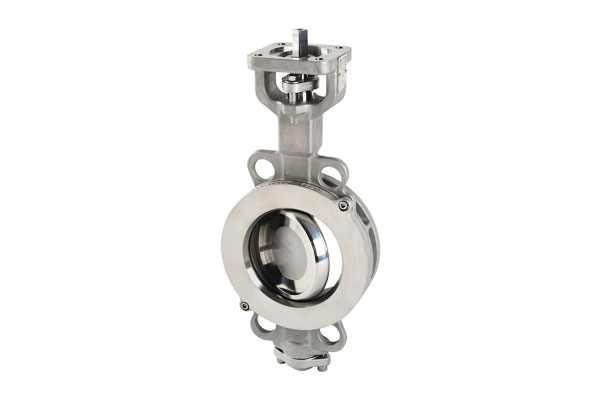
These valves are suited for applications in power generation, petrochemical systems, and steam service.
Եռակի օֆսեթ թիթեռի փական
The triple offset design includes a third geometric offset that results in a conical seating surface, eliminating rubbing between the disc and seat.
These valves typically use metal-to-metal seating, allowing them to achieve zero-leakage shutoff (Class vi) under high-pressure and high-temperature conditions—up to Class 600 and 600°C.
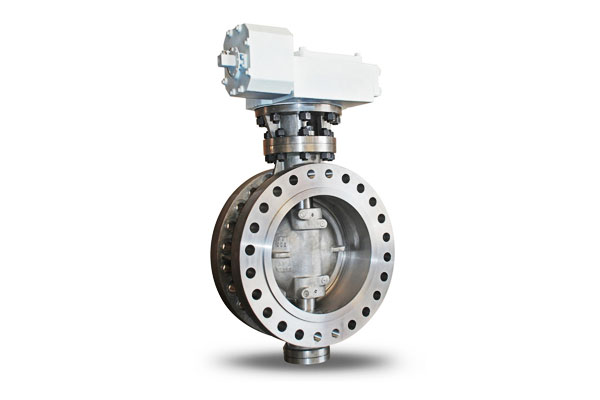
Triple offset valves are ideal for critical applications such as steam, Cryogenic ծառայություն, hydrocarbon processing, and corrosive chemical handling.
Based on the Actuation Method
The actuation method determines how the valve is operated—manually or through automation.
Manual Actuation Butterfly Valve
Manual butterfly valves are operated using a lever (for small diameters) or a gear operator (for larger sizes). They are cost-effective, simple to install, and easy to maintain.
These valves are appropriate for systems where flow changes are infrequent and remote operation is unnecessary.
Electric Actuation Butterfly Valve
Electric actuators use a motor to open and close the valve disc, providing precise control over valve positioning.
These actuators can be integrated into automated systems such as SCADA or PLCs, enabling remote operation and diagnostics.
Electric actuation is commonly used in building automation, water distribution networks, and industrial process control.
Pneumatic Actuation Butterfly Valve
Pneumatic actuators operate the valve using compressed air. They are known for rapid response times and reliable cycling.
Pneumatic butterfly valves are commonly found in chemical plants, food processing facilities, and clean-in-place (CIP) համակարգեր, where frequent actuation and quick shutoff are required.
Hydraulic Actuation Butterfly Valve
Hydraulic actuators use pressurized hydraulic fluid to generate torque, making them suitable for large-diameter valves or systems with high operating pressure.
They offer excellent force transmission and are used in demanding industries such as offshore drilling, Էլեկտրաէներգիա, and heavy manufacturing.
5. Materials and Coatings of Butterfly Valves
The choice of materials and coatings in butterfly valve construction is critical to ensuring durability, chemical compatibility, ճնշման ամբողջականությունը, եւ կոռոզիոն դիմադրություն.
Depending on the application—whether it’s potable water, corrosive chemicals, գոլորշի, or slurry—various combinations of body, սկավառակ, նստվածք, and coating materials are selected to meet operational and environmental demands.
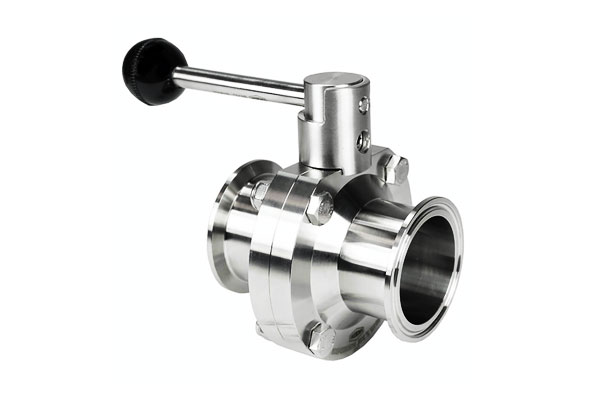
Valve Body and Disc Materials
The valve body and disc are structural components that must withstand internal pressure, mechanical stress, and chemical exposure. Common materials include:
- Չուգուն (CI)
Cost-effective and widely used in low-pressure water and HVAC systems. Not suitable for corrosive or high-temperature applications. - Ծորակ երկաթ (DI)
Stronger and more impact-resistant than cast iron. Often used in water distribution, wastewater treatment, and fire protection systems. - Ածխածնի պողպատ
Suitable for high-pressure systems and industrial environments. Requires protective coatings to prevent corrosion. - Չժանգոտվող պողպատ (SS304/SS316)
Գերազանց կոռոզիոն դիմադրություն; commonly used in chemical processing, ծովային միջավայրեր, and food-grade applications. SS316 offers superior resistance to chlorides and acids compared to SS304. - Bronze or Nickel-Aluminum Bronze (NAB)
Commonly used in seawater applications due to their exceptional resistance to saltwater corrosion and biofouling. - Duplex and Super Duplex Stainless Steel
Provide high mechanical strength and excellent resistance to pitting, Crevice Corrosion, and stress corrosion cracking. Ideal for aggressive chemical or offshore environments. - Պեպ, CPVC, and Other Plastics
Թեթև և կոռոզիակայուն; ideal for chemical dosing, low-pressure water, and non-metallic piping systems.
Նստվածք (Կնիք) Նյութեր
- Eddm (Էթիլեն պրոպիլեն դիեն մոնոմեր)
Suitable for water, օդային, and mild chemicals. Not compatible with oils or hydrocarbons. Temperature range: –40°C to +120°C. - NBR (Nitrile Rubber)
Resistant to oils, fuels, and some chemicals. Used in industrial, petroleum, and hydraulic applications. Temperature range: –10°C to +100°C. - Վիտոն (FKM)
Excellent chemical and heat resistance. Suitable for aggressive fluids, solvents, and high-temperature environments. Temperature range: –20°C to +200°C. - PTFE (Պոլիտետրաֆտորէթիլեն)
Inert to nearly all chemicals. Ideal for corrosive and high-purity applications. Offers non-stick surface with minimal friction. Temperature range: –50°C to +250°C. - Մետաղյա մետաղ (Աստղ, Ss, Ինքնորոշ)
Used in triple-offset butterfly valves for high-temperature, բարձր ճնշում, and zero-leakage applications. Resistant to erosion, հագնել, and thermal cycling.
Shaft and Bearing Materials
- Չժանգոտվող պողպատ
Commonly used for corrosion resistance and strength. - 17-4 PH Stainless Steel
Offers high strength and hardness with good corrosion resistance. - Bronze or Teflon-Coated Bearings
Reduce friction, enhance wear resistance, and improve actuation smoothness.
Coating and Lining Options
Protective coatings and internal linings enhance corrosion resistance, improve flow, and prolong service life:
- Fusion-Bonded Epoxy (FBE)
Provides excellent corrosion protection for potable water and wastewater applications. Applied electrostatically and cured to form a durable coating. - Nylon Coating
Used for enhanced chemical resistance and smoother surface finish, reducing friction and buildup. - Rubber Lining
Natural or synthetic rubber lining offers abrasion resistance and chemical protection, especially in slurry handling and acidic services. - PTFE Lining
Offers superior chemical inertness, used in highly corrosive environments and hygienic applications such as food and pharmaceuticals. - Glass Flake or Ceramic Epoxy Coatings
Used in harsh environments to resist erosion, Բարձր ճնշում, and chemical attack.
6. Key Technical Specifications of Butterfly Valves
Press նշման վարկանիշներ
Butterfly valves are manufactured to handle specific pressure ranges, defined by international standards:
- PN Ratings (metric)
-
- PN10: Maximum pressure 10 bar (~145 psi)
- PN16: Maximum pressure 16 bar (~232 psi)
- PN25, PN40 also available for high-performance valves
- ANSI/ASME Class Ratings (imperial)
-
- Դասավորել 150 (մինչեւ 285 psi at 38°C)
- Դասավորել 300 and above for high-pressure applications
Temperature երմաստիճանի միջակայքը
The operating temperature of a butterfly valve depends largely on the body, սկավառակ, and seat materials:
| Material Type | Typical Temperature Range |
| EPDM Seat | –40°C to +120°C |
| NBR Seat | –10°C to +100°C |
| PTFE Seat | –50°C to +250°C |
| Viton Seat | –20°C to +200°C |
| Metal Seated | Up to 600°C |
| PVC/Plastic Bodies | –10°C to +60°C |
Size Range (Nominal Diameter)
Butterfly valves are available in a wide range of nominal diameters:
- Common Range:
DN50 (2 դյույմ) to DN1200 (48 դյույմ) - Extended Range:
Up to DN3000 (120 դյույմ) for large industrial and infrastructure projects (Է.Գ., water treatment plants, dam outlets)
Flow Coefficient (Cv/Kv)
Flow coefficient represents the valve’s ability to allow fluid passage:
- Cv (Imperial): Flow rate (gallons/min) of water at 60°F with 1 psi ճնշման անկում
- Kv (Մետրիկա): Flow rate (m³/hr) մոտ 1 bar pressure drop
Custom butterfly valves typically offer high Cv values due to their full-bore design when fully open. Cv depends on disc shape, valve size, and degree of opening. Օրինակ:
- DN100 (4″) butterfly valve: Cv ≈ 120–150
- DN300 (12″) butterfly valve: Cv ≈ 1500–2000
Արտահոսքի դասեր
Defined by international standards such as ANSI/FCI 70-2 մի քանազոր Մեջ 12266, leakage classes indicate the valve’s sealing performance:
| Դասավորել | Նկարագրություն | Typical Use |
| Class I | Dust tight (not tested) | Basic industrial systems |
| Class IV | Metal-to-metal seat, minimal leakage | Գործընթացների վերահսկում |
| Class vi | Bubble-tight shutoff (soft seat) | Ջրմուղ, օդային, gas services |
Resilient-seated butterfly valves typically meet Class VI, while metal-seated or triple-offset valves may achieve Class IV or tighter with specialized machining.
Մեծ ոլորող մոմենտ ստեղծելու պահանջները
Operating torque depends on valve size, ճնշում, media type, and seat friction:
- Small valves (DN50–DN150): ~20–80 Nm
- Large valves (DN600–DN1200): >1000 Նմ
7. Թիթեռի փականների առավելությունները
- Compact and Lightweight: Ideal for space-constrained installations.
- Fast Operation: Quarter-turn design enables rapid open/close cycles.
- Ծախսարդյունավետ: Especially in large-diameter applications compared to gate or ball valves.
- Pressure ածր ճնշման անկում: Streamlined flow when fully open minimizes energy losses.
- Multi-function: Suitable for both on-off and throttling services.
- Պարզ դիզայն: Fewer moving parts result in lower maintenance needs and enhanced reliability.
8. Limitations and Challenges
- Not Suitable for High-Pressure Throttling: Disc position may cause cavitation and vibration.
- Seal Degradation: Especially in resilient-seated designs exposed to abrasive or high-cycle operations.
- Flow Obstruction: The disc remains in the flow path even when fully open.
- Limited Temperature Range: Elastomeric seats restrict use in high-temperature applications.
- Potential for Leakage: Especially in low-cost or improperly selected valves under high stress.
9. Թիթեռի փականների կիրառությունները
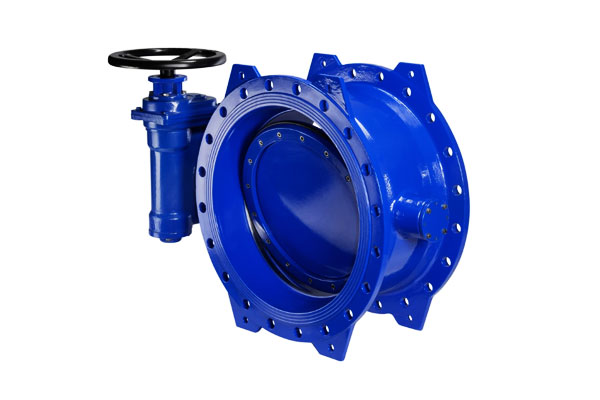
- Ջրմուղ & Կեղտաջրերի մաքրում: Efficient for isolation and control of clean and dirty water.
- Յուղել & Գազ: Used for fuel handling, նավթավերամշակման գործարան, and offshore systems.
- HVAC համակարգեր: Regulating hot or chilled water and air distribution.
- Chemical and Petrochemical: Resistant materials handle aggressive fluids and vapors.
- Ծովային & Օֆշորային: Compact size is beneficial for tight engine rooms.
- Սնունդ & Beverage: Hygienic valves with PTFE or stainless internals are standard.
- Էլեկտրաէներգիայի սերունդ: Cooling water and auxiliary service lines.
- Ցելյուլոզ & Paper: Handles slurry and fiber-laden flows with robust disc and seat designs.
10. Butterfly Valve vs. Other Valve Types
| Հատկորոշում | Թիթեռի փական | Դարպասի փական | Գլոբուսային փական | Գնդիկավոր փական |
| Շահագործում | Quarter-turn (90° rotation) | Բազմաշրջադարձ (multiple turns to open/close) | Բազմաշրջադարձ (linear motion) | Quarter-turn |
| Հոսքի հսկողություն | On/off and moderate throttling | Primarily on/off, poor throttling | Excellent throttling and flow regulation | Excellent shutoff, limited throttling |
| Press նշման անկում | Low when fully open | Very low when fully open | Higher due to tortuous flow path | Minimal, full bore flow |
| Size & Քաշ | Compact, թեթեւակի, suitable for large sizes | Bulkier and heavier | Bulkier, typically smaller sizes | Compact for small sizes; bulky for large sizes |
| Կնքման հնարավորություն | Soft/metal seats, moderate tightness | Good shutoff | Excellent shutoff | Bubble-tight, very tight shutoff |
Actuation Speed |
Արագ (quarter-turn) | Դանդաղկոտ (multiple turns) | Դանդաղկոտ (multiple turns) | Արագ (quarter-turn) |
| Տեխնիկական սպասարկում | Պարզ, fewer parts | More prone to jamming, more complex | Չափավոր, frequent maintenance needed | Requires disassembly for internal servicing |
| Ծախս | Economical, especially in large diameters | Higher, especially for large sizes | Չափավոր եւ բարձր | Higher, especially at large sizes |
| Բնորոշ ծրագրեր | Hvac, Treatment րի մաքրում, low/medium pressure systems | Distribution րի բաշխում, յուղել & Գազատարներ | Steam control, precise flow applications | High-pressure isolation, Քիմիական մշակում |
| Սահմանափակումներ | Not ideal for high-pressure throttling | Slow operation, not suited for throttling | Higher pressure loss, bulkier | Bulky and expensive for large diameters |
11. Selection Criteria
Choosing the right butterfly valve involves a thorough evaluation of multiple factors to ensure optimal performance, երկարակեցություն, and cost-effectiveness within a specific application.
Key criteria include:
Fluid Characteristics
- Type of Fluid: Clean liquids, slurries, corrosive chemicals, or gases—each requires specific seat materials and body construction to withstand erosion, կոռոզիիոն, and abrasion.
- Մածուցիկություն: Higher viscosity fluids may require valves with enhanced sealing and actuator torque.
- Presence of Solids: Fluids containing suspended solids or particulates demand robust seats and body designs to prevent wear and leakage.
Operating Pressure and Temperature
- Pressure Rating: Match valve pressure class (Է.Գ., PN10, PN16, Դասավորել 150) to pipeline operating pressure to avoid premature failure.
- Temperature երմաստիճանի միջակայքը: Consider seat and body material limits—rubber seats for low temperatures and PTFE or metal seats for high-temperature service up to 600°C.
Required Shutoff Tightness
- Leakage Class: For critical isolation, triple-offset butterfly valves offer near zero leakage (Class vi).
For less demanding applications, resilient seated valves provide economical sealing with acceptable leakage.
Valve Actuation
- Manual vs Automated: Determine whether manual lever, gear, օդադող, էլեկտրական, or hydraulic actuators best suit the operation frequency, safety requirements, and integration into control systems.
- Speed of Operation: Applications requiring rapid open/close cycles may favor quarter-turn actuators.
Installation Constraints
- Space Availability: Custom Butterfly valves have a compact design, making them suitable for limited space installations compared to bulkier valve types.
- Connection Type: Consider compatibility with piping—wafer, քոթակել, or flanged designs based on installation and maintenance needs.
Cost vs. Performance Balance
- Weigh upfront costs, maintenance requirements, and expected lifespan. Sometimes investing in high-performance valves reduces total cost of ownership through reliability and fewer replacements.
12. Future Trends in Butterfly Valve Technology
- Smart Integration: IoT-enabled actuators with sensors for real-time monitoring (ճնշում, ջերմաստիճան, position), enabling predictive maintenance.
- Ընդլայնված նյութեր: Carbon fiber bodies (30% lighter than steel) for offshore use; ceramic seats for extreme abrasion.
- Extreme Environments: Cryogenic models (-196° C) for LNG; high-temperature designs (800° C) for hydrogen plants.
- Կայունություն: Low-leakage designs (Class VI+) to reduce emissions; recyclable materials for valve bodies.
13. Եզրափակում
Custom butterfly valves are essential components in modern fluid control systems, known for their compact design, fast operation, եւ բազմակողմանիություն.
Originally conceptualized in the early 20th century, these փականներ have evolved significantly to meet the growing demands of industries requiring efficient and cost-effective flow control solutions.
Այսօր, butterfly valves are widely used in diverse sectors such as Treatment րի մաքրում, Նավթ եւ գազ, Hvac, Քիմիական մշակում, ծովային, մի քանազոր սնունդ և խմիչք industries.
Their popularity stems from their ability to handle a broad range of fluids—including gases, հեղուկներ, and slurries—with minimal pressure drop and rapid shutoff capabilities.
Custom butterfly valves are a cornerstone of modern fluid handling systems due to their efficiency, low cost, եւ հարմարվողականություն.
Whether used in municipal pipelines, industrial processing, or precision-controlled environments, selecting the right butterfly valve—matched to pressure, fluid, and operational needs—is essential for long-term performance and reliability.
Սա: Բարձր ճշգրտության փականների ձուլման լուծումներ պահանջկոտ ծրագրերի համար
Սա ճշգրիտ փականների ձուլման ծառայությունների մասնագիտացված մատակարար է, հուսալիություն պահանջող արդյունաբերության համար բարձր արդյունավետության բաղադրիչների մատակարարում, ճնշման ամբողջականությունը, և չափերի ճշգրտությունը.
Հում ձուլվածքներից մինչև ամբողջովին մշակված փականների մարմիններ և հավաքույթներ, Սա առաջարկում է վերջնական լուծումներ, որոնք նախագծված են խիստ համաշխարհային չափանիշներին համապատասխանելու համար.
Փականների ձուլման մեր փորձաքննությունը ներառում է:
Ներդրումների ձուլում փականի մարմինների համար & Զարդարել
Կորած մոմի ձուլման տեխնոլոգիայի օգտագործումը բարդ ներքին երկրաչափություններ և ամուր հանդուրժողականությամբ փականի բաղադրիչներ արտադրելու համար՝ բացառիկ մակերեսային հարդարումներով.
Ավազի ձուլում & Shell բորբոս ձուլում
Իդեալական է միջինից մեծ փականների մարմինների համար, եզրեր, և գլխարկներ, որոնք ծախսարդյունավետ լուծում են առաջարկում ամուր արդյունաբերական կիրառությունների համար, ներառյալ նավթը & գազի և էլեկտրաէներգիայի արտադրություն.
Precision Machining for Valve Fit & Կնիքի ամբողջականություն
CNC հաստոցներ նստատեղերի, թելիկներ, և կնքման երեսներն ապահովում են, որ ձուլված յուրաքանչյուր մաս համապատասխանում է ծավալային և կնքման կատարողական պահանջներին.
Նյութերի շրջանակը կրիտիկական կիրառությունների համար
Չժանգոտվող պողպատներից (CF8/CF8M/CF3/CF3M), փող, ծորակ երկաթ, դեպի դուպլեքս և բարձր լեգիրված նյութեր, Սա մատակարարում է փականների ձուլվածքներ, որոնք կառուցված են քայքայիչ պայմաններում, բարձր ճնշում, կամ բարձր ջերմաստիճանի միջավայրեր.
Whether you require custom-engineered steam traps, butterfly valve, խցան փականներ, գլոբուս փականներ, դարպասի փականներ, կամ արդյունաբերական փականների ձուլվածքների մեծածավալ արտադրություն, ՍԱ ձեր վստահելի գործընկերն է ճշգրտության համար, ամրություն, և որակի ապահովում.
ՀՏՀ
What is the difference between a wafer and lug-style butterfly valve?
Wafer valves clamp between flanges (no bolt holes), while lug valves have threaded lugs for bolted installation, allowing one-sided removal. Lug valves suit higher pressure (≤25 bar) than wafer (≤16 bar).
How long do butterfly valves last?
Service life ranges from 10–15 years for resilient-seated valves in clean service to 5–8 years for metal-seated valves in abrasive environments. Proper maintenance extends life by 30–50%.
Are butterfly valves suitable for slurry or abrasive fluids?
Metal-seated triple-offset valves are suitable; resilient seats erode quickly. Use hardened disc materials (Է.Գ., Duplex չժանգոտվող պողպատ) for extended wear.

